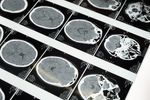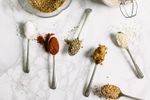Just about every day patients ask me how they can age well, or at minimum, do it better than their parents and grandparents did -- and the good news is that many of them can! As the biology of aging has evolved over the past few decades, we now know so much more about how to help our bodies age more slowly, in better health, than ever before.
Granted, we’ve not quite figured out how to stop aging but there are a number of steps we can take, starting now, to get into a slower aging groove. One of the biggies is protein. While it may not seem like an obvious clock-stopper, as we age, increasing protein intake becomes especially important – and a lot of people overlook this relatively simple, longevity upgrade. So, how does higher protein consumption benefit our bodies as the birthdays start to add up? Here are a few thoughts on the plus’s protein brings to the table, why you need more of it, and how to get enough to fuel your better aging goals:
Feed your muscles.
When it comes to remaining vertical, vital and ambulatory for as long as possible, it’s all about maintaining muscle. Holding onto what you’ve got makes the most basic everyday activities like hauling groceries, getting out of chairs, and climbing stairs a lot more manageable, no matter what your age. A diet rich in protein is essential for stimulating muscle protein synthesis, helping to maintain and build muscle mass. But despite the abundance of healthy protein sources, a lot of us still aren’t getting enough and that has serious implications for our long-term health and longevity.
Think of protein as your muscle manager.
In younger adults, maintaining muscle mass is fairly easy to do, a healthy lifestyle and throw in a little strength training and you’re good to go. As time marches on, however, and we start to cross the line into our late 30s, early 40s and beyond, our bodies start to require more protein and some regular strength work to hold on to the muscle mass and strength that we took for granted when we were in our hormonal prime (I’m talking growth hormone and, for men especially, testosterone).
For example, a 45-year-old dad doing the same workout as his 20-year-old son is still not going to get the same results (not without hormone supplementation) but a diet rich in protein will help narrow the gap. It will also help Pop postpone the ravages of ‘sarcopenia,’ the age-related and virtually irreversible loss of muscle mass and strength that affects all of us, men and women, when we hit our later senior years.
Another muscle management helper? Your doctor. In addition to ramping up your protein intake to help you hang onto muscle mass, both men and women may want consider talking to their doctors about testing testosterone levels, which also play a key role in building muscle mass. If your test results are low, you might consider augmenting with Testosterone Replacement Therapy (TRT), particularly if you are over 50 years old.
But keep in mind, muscle loss isn’t just an ‘elder thing.’ It starts to kick in as early as ones 30’s (https://www.webmd.com/healthy-aging/sarcopenia-with-aging), picks up speed in one’s 40s and accelerates after the age of 60. Your job? To start pushing back as soon as possible. Opting out is a recipe for more rapid aging, and significant muscle mass decline, roughly 3 – 5% per decade (https://www.webmd.com/healthy-aging/sarcopenia-with-aging) or more, which, by the age of 80, can leave you with roughly half the muscle you had at in your comparatively muscle-bound 20’s.
Protein and muscles are a long-term team.
For some, simple vanity keeps maintaining muscle at the top of the to-do list, making physical activity a priority. But regardless of the motivation, enough protein, in tandem with physical activity, keeps muscles strong and functioning well. With adequate muscle mass, you also get enhanced strength, balance, and mobility, thereby reducing the risk of falls and fractures – all great to have in your corner if you’re planning on living a long and healthy life. With adequate protein, you can more easily maintain better muscle mass, which in turn promotes health and longevity across several important fronts, including your metabolic health, bone health, brain health and immunity. With adequate protein comes numerous benefits, including:
- Improved insulin sensitivity: protein helps improve insulin sensitivity which in turn helps control blood sugar levels and curb the risk for type 2 diabetes.
- Better bone density: adequate protein intake supports bone health by boosting calcium absorption and stimulating the production of bone-forming cells, while protein-supported muscle mass and strength helps protect against falls and reduces fracture risk.
- Stronger immunity: proteins provide essential amino acids necessary for the production of immune cells and antibodies, crucial for a robust immune response.
- Better brain function and mood: proteins are vital for the production of neurotransmitters, which play a role in mood regulation and cognitive function at every age and, better yet, some studies suggest that higher protein intake may be associated with a lower risk of cognitive decline and dementia.
- Improved wound healing: higher protein intake supports tissue repair and wound healing, which can be slow in older adults.
- Encouraging feelings of satiety: protein-rich foods promote the feeling of fullness, tamping down appetite and reducing overeating.
- Enhancing nutrient intake: particularly with older adults, adequate protein consumption can help them meet overall nutritional needs more easily, without excessive calorie consumption.
Run your protein numbers.
Figuring out the perfect amount of protein for your body depends on a number of factors – it’s not one size fits all and it’s not one and done – protein needs evolve over time. In addition to aging, some of the factors to consider include your body weight, activity level, overall health, as well as specific health goals. That said, here are some general guidelines to help you determine your protein needs as you age:
- Daily protein intake: to prevent deficiencies that lead to muscle loss in adults, the Recommended Dietary Allowance (RDA) calls for an extremely conservative, very rough average of 0.8 grams per kilogram of body weight per day (that works out to about 55grams of protein for a 150-pound woman). But, when working with patients, I find it’s far better and more effective to at least double those grams – and ramp up from 55 to about 100 grams per day to guard against deficiencies and promote optimal function.
- Age matters: In older folks, when determining optimal daily protein needs, I often recommend much more protein than the standard RDA to maintain muscle mass and function. With older patients, I recommend a more substantial dose of 1.5 to 2 grams of protein per kilogram of body weight per day – to help muscles grow and thrive, not just survive (or lose ground).
- Activity levels matter too: For more physically active older adults or for those who engage in regular resistance training, daily protein amounts should tip the scales towards the higher end, around 2 grams per kilogram of body weight (or about 1 gram per pound).
- Got conditions: As in chronic ones? They can impact protein requirements, so you will need to consult with your doc to help you find the best balance of protein intake. That goes double for those managing conditions like diabetes, heart disease, and chronic kidney disease.
- On the mend? During periods of recovery from illness or surgery, your protein needs may be higher to support healing and tissue repair, so, here too, aim for the higher end.
A protein prescription.
OK, so, you’re ready to amp up your protein. Great! Your muscles appreciate your support. How to put more protein on your plate and hit the gram goals? Here are a few thoughts to keep in mind:
- Distribute evenly: Consuming protein evenly, at regular intervals throughout the day, instead of protein bombing yourself with one or two large meals is a good way to go. This can help maximize muscle protein synthesis, helping to keep those muscles strong and optimally firing on all cylinders.
- Get the good stuff: Focus on high-quality protein from healthy sources, such as organic and pasture raised meats and eggs, wild fish, dairy products, hemp and pumpkin seeds, legumes and non-starchy veggies, like kale, spinach, cabbage, cauliflower broccoli and brussels sprouts.
- Pack protein into most meals, including your morning one: think protein-rich foods like eggs, Greek yogurt and cottage cheese.
- Pack snacks: stock your daypack with at-the-ready protein snacks such as biltong, jerky, high protein, low sugar bars or nuts and seeds.
- Cast a wide net: when it comes to protein, incorporate a variety of protein sources into your diet to ensure a balanced intake of essential amino acids.
- Supplement with protein shakes: Protein shakes are a great way to get more protein into your diet, but make sure they are low in sugar too, and always strive to get the majority of your protein from whole food sources instead.
Bottom line: Remember to pay attention to personal factors such as health status, activity level, and specific goals when determining your protein requirements. But as you age, you probably need double the amount the Recommended Dietary Allowance (RDA) calls for.




